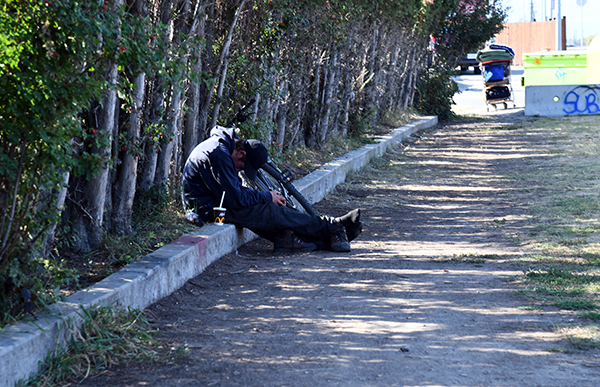Home »

More visible homelessness expected this winter
Solutions and action needed, not criticism, says City of Cranbrook
As winter approaches, the City of Cranbrook and its community partners are preparing for what is expected to be a challenging season for the community’s most vulnerable residents.
With the anticipated loss of critical funding and support programs that have kept the homeless population warm in less visible locations, they will need to seek warmth and shelter in town. The number of people experiencing visible homelessness is expected to increase across the city this winter.
These challenges were highlighted in a report to council on Monday night (Nov. 3) from the City’s Social Development Coordinator, Marcel Germer.
Over the past few years, BC Housing and numerous local non-profits have worked closely with the city to address the needs of vulnerable residents and reduce visible homelessness—efforts that have shown real success.
In 2021, camps like the 20 tents behind McDonald’s on the berm along Ridgeview Road often caused conflicts with businesses, customers, and visitors, other encampments near creeks and schools were highly visible and concerning to parents and residents nearby. Today those highly visible and problematic urban encampments are no longer in high visibility and busy areas.
This has reduced conflicts in the community, lowered emergency response needs, and saved taxpayers money, showing the results that come when organizations work together.
Unfortunately, reduced provincial funding for warming support this year and limited housing options mean those gains are at risk. As temperatures drop, more people will be forced to seek warmth and shelter wherever they can—doorways, alcoves, and other public spaces in the city.
Despite the best efforts of local agencies, there are simply not enough shelter beds or resources to meet demand this year.
ANKORS will operate the 2025–2026 Extreme Weather Shelter in partnership with The Dwelling Place and BC Housing, providing 20 beds when temperatures drop to -13°C or lower. While this represents an increase from last winter, the closure of the Travelodge has resulted in the loss of 18 emergency beds overall.
Renovations at Cozy Bear Supportive Housing continue but it is not expected to open until 2026, while BC Housing maintains 20 temporary units at the Travelodge for older adults.
In addition, no cold weather funding has yet been secured for this winter season—funding that last year provided essential supports such as propane, firewood, and warm clothing to those sheltering outdoors.
Without it, it is expected to be a difficult winter for unhoused individuals.
While many in the community continue to work hard to find and fund solutions, the city is also calling on residents to look at how they respond to homelessness in the community. Too often, negativity and criticism dominate public discussions and social media posts criticizing the people and programs that are trying to reduce visible homelessness. That does nothing. Step up, and provide real help or offer solutions.

“Every year, as challenges become more visible, we see the same cycle of anger and blame,” said Germer, Social Development Coordinator. “We’re asking people to do more than post complaints online. If you have ideas, step forward. If you want change, be a part of the work to make it happen. Ideas and solutions – and actually doing something, not criticism, will help people survive this winter.”
Cranbrook’s service providers are doing everything possible with limited resources, but the community’s strength lies in its residents. The city is urging everyone, businesses, organizations, and individuals to turn frustration into action by supporting local shelters, donating warm clothing, volunteering time, or simply treating those in need with empathy and respect.
“This winter will create some challenges. How the community responds, whether with criticism or compassion will define who we are,” Germer added.
Despite these challenges, there are many positives that have happened in Cranbrook the past year. Service providers are working together to maximize the use and effectiveness of the Health Canada grant awarded back in July 2025 and the outcomes from this initiative will have significant and enduring positive impacts on the community.
A lot of hard work is being done each day by the local social network to care for vulnerable residents while maintaining focus on increasing overall community safety.
Cranbrook is moving the needle and becoming known across the province for its community-style model of managing and responding to the complex social issues it faces. Cranbrook has not solved its social issues, but it has changed the narrative around how to address homelessness and how to balance compassion with accountability.
e-KNOW file photo
City of Cranbrook







